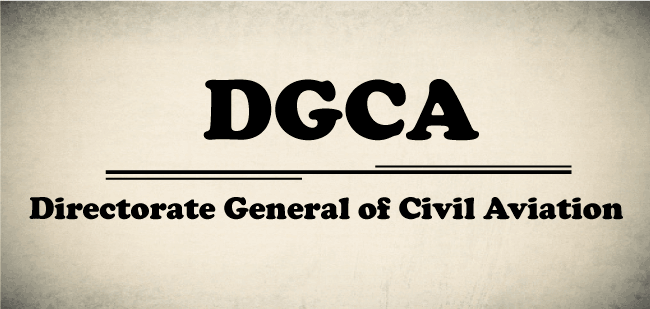What is the full form of DGCA
DGCA: Directorate General of Civil Aviation
DGCA stands for Directorate General of Civil Aviation. The Government of India established the Directorate General of Civil Aviation (DGCA) as a statutory agency to oversee civil air travel in India. By virtue of the Aircraft (Amendment) Act of 2020, it was made a statutory body. The DGCA is in charge of issuing aviation licenses, including PPLs, SPLs, and CPLs in India. It also maintains all aviation regulations and conducts investigations into accidents and occurrences. The main headquarter is situated in New Delhi on Sri Aurobindo Marg, next to Safdarjung Airport. The organization will soon be replaced with a Civil Aviation Authority (CAA), which the Indian government plans to model after the American Federal Aviation Administration (FAA).

Functions:
- Civil aviation aircraft registration
- Airport accreditation
- Granting licenses to pilots, aircraft maintenance technicians, air traffic controllers, and flight engineers as well as holding appropriate examinations and checks
- Implementing changes to the Civil Aviation Requirements, the Aircraft Act and the Aircraft Rules, and comply with the ICAO (International Civil Aviation Organization) Annexes' updates, as well as putting forth suggestions to amend other Acts or pass new legislation in order to put an international Convention into effect or amend an existing Convention.
- Establishing airworthiness requirements for civil aircraft with registration in India and issuing certificates of airworthiness for such aircraft
- Investigating accidents and significant mishaps affecting aeroplanes up to 2250 kg AUW (Aircraft Gross Weight) & taking steps to prevent accidents, such as developing and implementing safety.
- Competency evaluations of the flight staff as well as other operational staff, including flight dispatchers and flight attendants.
- Sending responses to State letters, coordinating with ICAO issues with other agencies, and taking any necessary action resulting from the ICAO's Universal Safety Oversight Audit Programme (USOAP).
- Issuing air operator's certificates to Indian airlines and regulating air transport services operated by Indian and international operators going to, from, over, and through India, including approving their scheduled and non-scheduled flights.
- Providing a high level of training ensured by the approval of institutions, offering flying instruction, including flight simulators, AME training, air traffic services training, and any other aviation-related training.
- Approving companies for aircraft maintenance, repair, design, and production and continuing to monitor them.
- Maintaining central agency for executing Annex 9 rules in India and for managing issues connected to assistance at Indian airports, with hosting conferences of the National Facilitation Committee DGCA Organisation Manual.
- Providing guidance to the government on matters connected to air travel, such as two-sided air services agreements, ICAO problems, and basically any technical problems involving civil aviation, as well as serving as the nation's primary regulatory and development agency for the industry
- Maintaining compliance with ICAO Annex 16 regarding noise levels and engine emissions and, where needed, cooperating with the appropriate environmental authorities.
- Governing Air Navigation Services-related subjects along with the collaboration with the ICAO to provide new air routes for civil usage in Indian airspace, as well as coordination at the national level between military and civilian air traffic authorities for flexible use of air space
- Acting as a catalyst to encourage the domestic design program section of aircraft and aviation parts.
- Approving operator training programmes for transporting risky items, giving permits for such transport, etc.
- Checking whether all organizations approved, certified, or licensed under the 1937 Aircraft Rules are subject to safety oversight.
Civil Aviation Administration
The International Civil Aviation Organization's criteria will be met by the CAA, which is planned to replace the DGCA as a self-governing regulatory organization (ICAO). Along with a full-fledged environment department, the CAA will have distinct departments to handle matters of safety, financial regulation, and dispute resolution. Additionally, an impartial accident investigation bureau will also be present. The authority will be free to choose its own employees. The DGCA is currently understaffed and without any hiring authority. Similar to the American FAA, the CAA will have both financial and administrative authority. With this new authority, the regulator will be better positioned to meet the demands of the nation's expanding aviation industry. Despite this, the workers collaborating with DGCA will be shifted to the CAA.
The establishment of the new authority will cost around Rs 11.2 crore. The Civil Aviation Authority of India (CAA) would support itself entirely through a separate fund known as the "Civil Aviation Authority of India Fund". The Central Government will appoint its Chairperson, Director General, with other 7-9 members. These individuals will have training in the areas of airspace management, air navigation systems, aerodromes, flight standard operations, and aviation safety.
|

 For Videos Join Our Youtube Channel: Join Now
For Videos Join Our Youtube Channel: Join Now










